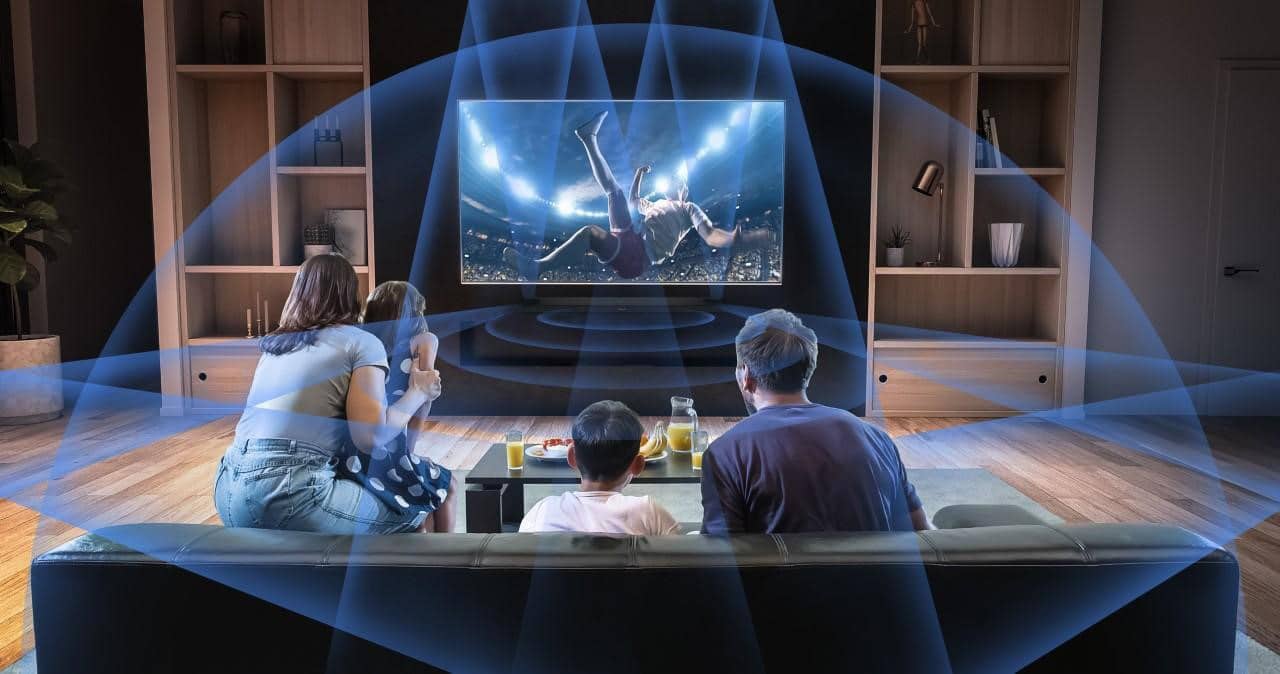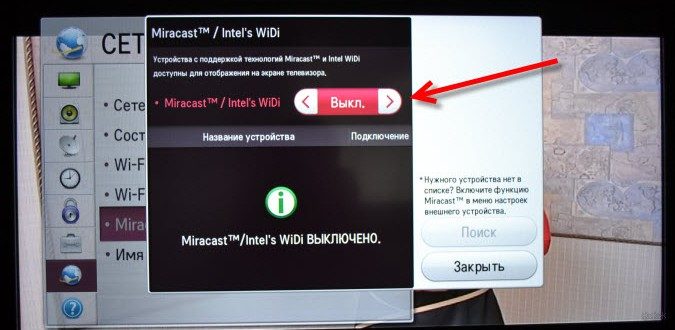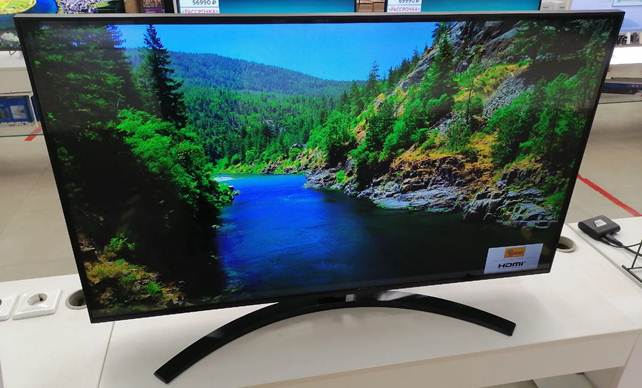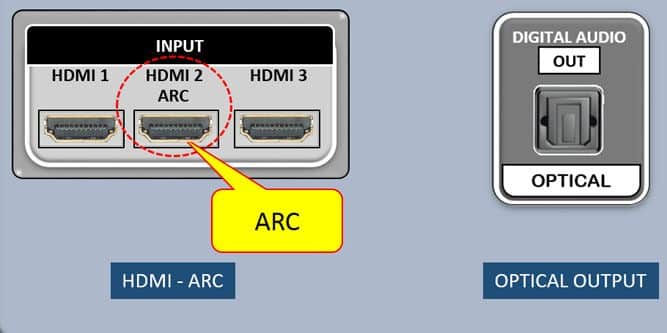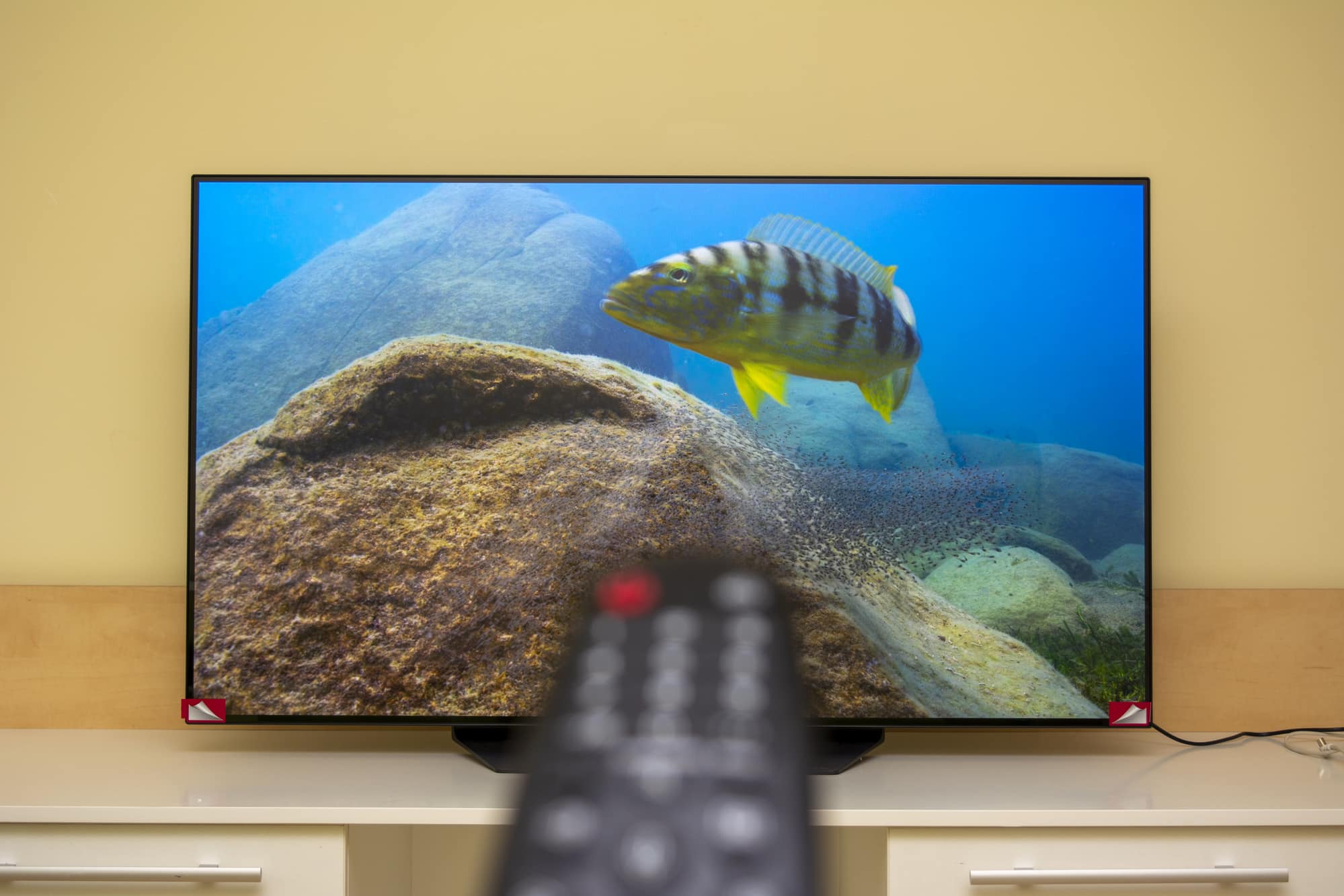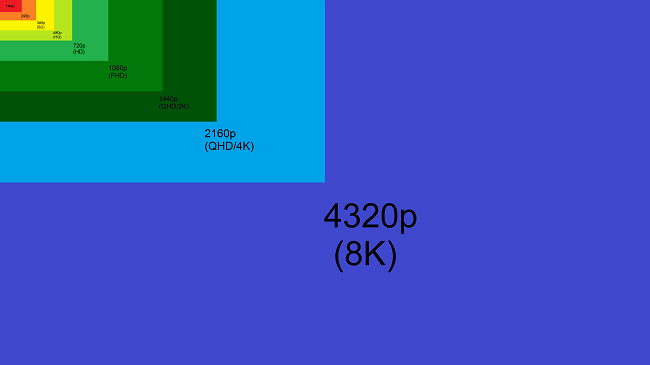NanoCell TV technology, advantages and disadvantages, TVs that use Nano. It is not uncommon for users to sit on the side rather than center of the screen when watching TV, or lie on their side to unwind after a hard day at work. At the same time, it is worth knowing that the viewing angle significantly distorts the color perception of the image, the correctness of the information. To eliminate all possible problems, talented designers have introduced TVs with NanoCell ™ technology, which guarantees perfect color reproduction from any angle, NanoCell is the correct perception of the dimensions of objects.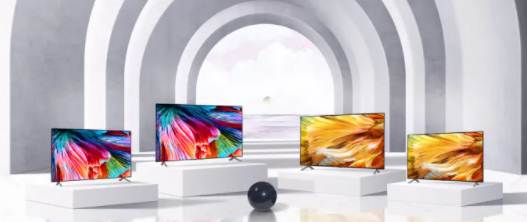
- What is the NanoCell technology, the difference from related
- NanoCell vs OLED vs QLED: Which of the three technologies is the best?
- NanoCell is a profitable choice
- QLED – quantum LEDs in action
- OLED – LED technology “marked organic”
- Advantages and disadvantages
- NanoCell technology – how does it work?
- TOP best TVs for 2022 with NanoCell technology
What is the NanoCell technology, the difference from related
Many people are wondering what Nanocell is on TV and how it differs from standard models of technology? Nano is the newest structure used for the production of LED TV screens. The name Nanocell is formed by special particles of 1 nanometer, which are located on top of the screen, forming a unique image. The filtered particles after application give the colors a completely different glow, remove dullness, so that the picture on the TV is clear and bright.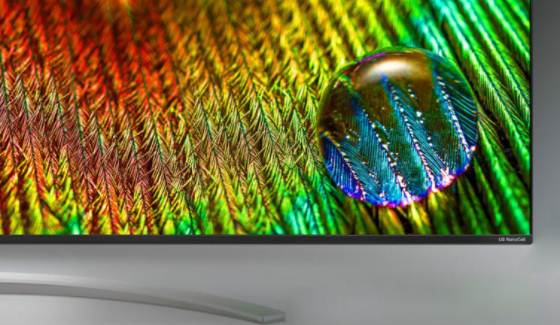
NanoCell vs OLED vs QLED: Which of the three technologies is the best?
To date, LG’s NanoCel technology has revolutionized TV production. Thanks to talented developers, you can view the display at an angle of up to 178 degrees, without losing quality and color reproduction of objects. This could not have been achieved 3-4 years ago. Although, it is worth saying that technologies such as OLED and QLED are very popular in the production of digital equipment, which also provide an impeccable image viewing.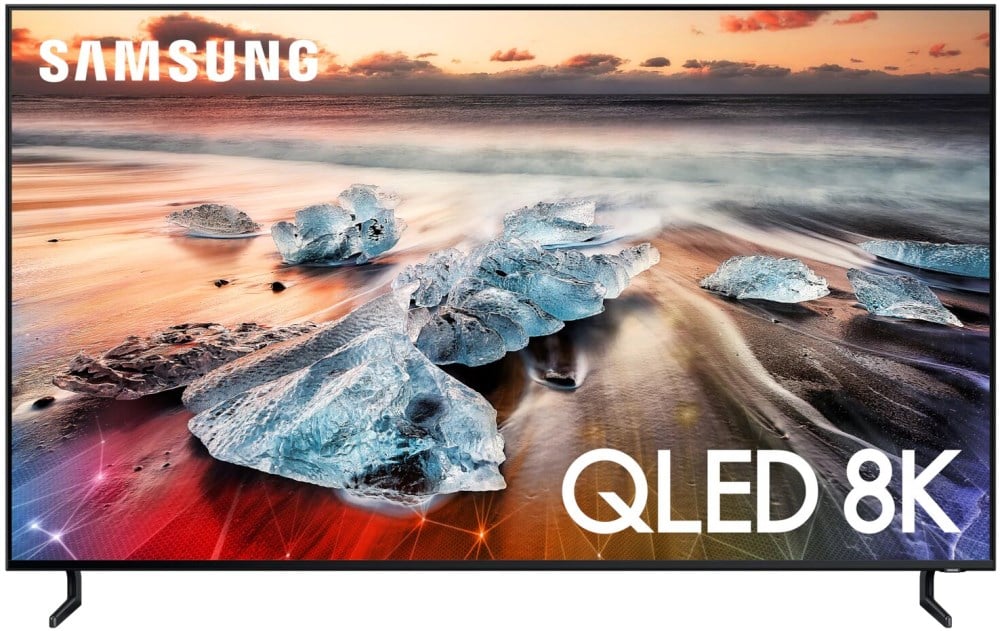 The uniqueness of NanoCell is provided by a bright color palette, due to a billion color combinations on nanoparticles deposited on the display. This takes the quality of digital viewing to another level.
The uniqueness of NanoCell is provided by a bright color palette, due to a billion color combinations on nanoparticles deposited on the display. This takes the quality of digital viewing to another level.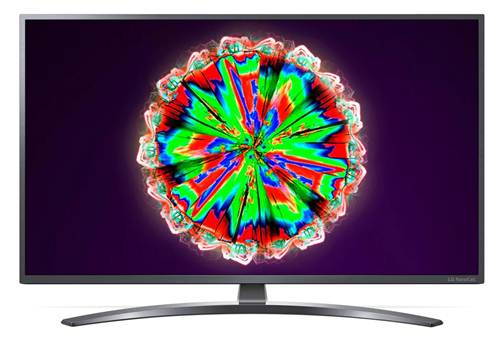
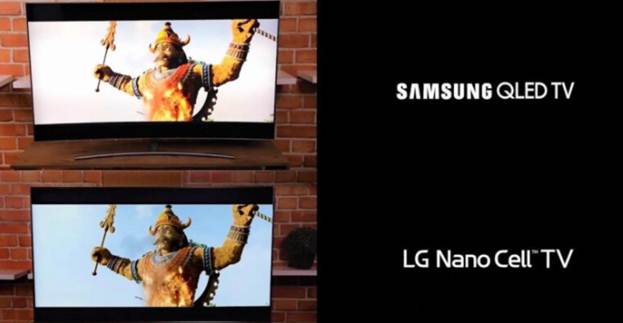 It was only when the technology was first developed that it was called NanoCell IPS-Nano, due to the fact that the product included a combination of the smallest nano-cells and LG IPS IP technology, also called In-Plane Switching. Thanks to this, the LG nanocell TV provides an opportunity to significantly improve the quality of the content you watch:
It was only when the technology was first developed that it was called NanoCell IPS-Nano, due to the fact that the product included a combination of the smallest nano-cells and LG IPS IP technology, also called In-Plane Switching. Thanks to this, the LG nanocell TV provides an opportunity to significantly improve the quality of the content you watch:
- providing more bright colors, due to the features of filtering nanoparticles;
- wide viewing angle with IPS technology.
Interesting! OLED technology was first patented by Sony and Panasonic, while QLED is owned by Samsung, and the unique NanoCell technology is marketed by LG.
NanoCell is a profitable choice
A distinctive feature of this particular technology lies in the function of filtering colors for exceptional quality. When viewed, there are no cutting eyes of bright orange, red colors, “yellowness”. This gives image stability. Today, the assortment of sales includes nano cell TVs of the LZh company with resolutions: Dolby Vision, Ultra HD and 4K Cinema HDR.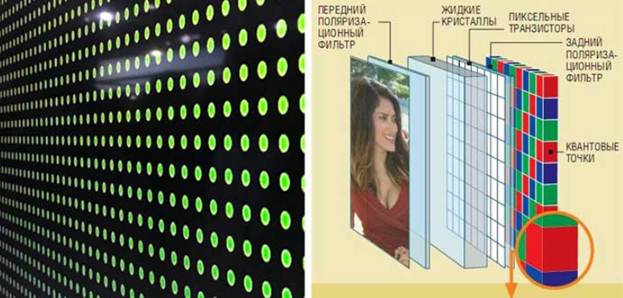 NanoCell also includes the ability to voice control and control, for this you need to connect applications such as Google Assistant. The technology is equipped with a modern intelligent processor to improve the quality of the image on the screen. Thanks to Dolby Atmos, the TV reproduces perfectly clear sound.
NanoCell also includes the ability to voice control and control, for this you need to connect applications such as Google Assistant. The technology is equipped with a modern intelligent processor to improve the quality of the image on the screen. Thanks to Dolby Atmos, the TV reproduces perfectly clear sound.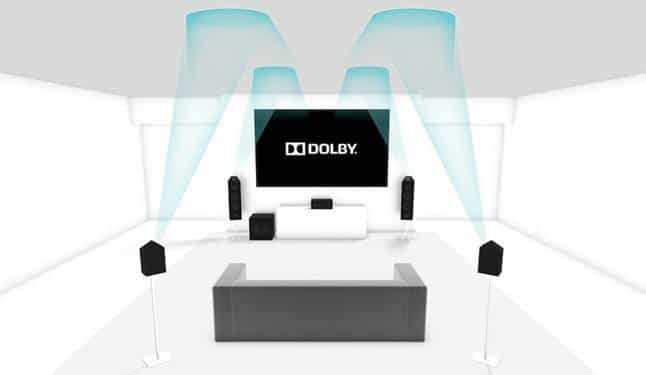
QLED – quantum LEDs in action
QLED digital TV development technology is currently represented in Samsung products, which can become a worthy competitor to Nanocell technology. The only disadvantage of QLED in which it loses is the dependence on a backlit LED panel. Essentially, QLED is an upgraded form of LCD technology with LEDs, a panel made up of tiny dots (pixels) displayed by 4K LCD.
OLED – LED technology “marked organic”
It is interesting to understand, OLED or Nanocell which is better? Compared to the previous technology, TVs designed with OLED do not include a backlight in the working circuit. This ensures perfect black balance on the screen, resulting in high-quality contrast when the image is reproduced. The undoubted advantage of this modern technology is the ability to implement it in the thinnest TV screen, as well as in a curved design. In turn, this feature significantly increases the viewing angle. Comparing all 3 technologies, it is necessary to pay attention to the best ratio of deep blacks and, accordingly, contrast. OLED is an organic technology, i.e. environmentally friendly.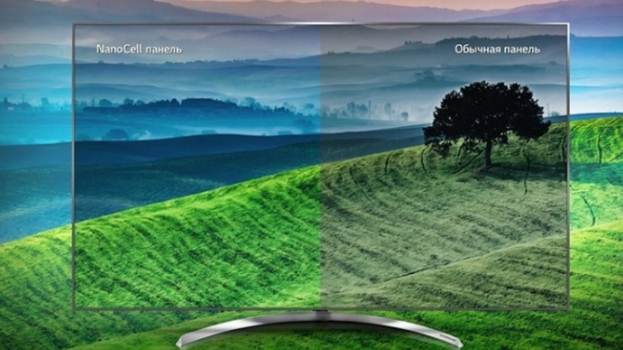 With the modern choice of digital technology, the buyer is faced with the problem, what is the best technology? The NanoCell operation scheme is mainly found in 8K TVs, guaranteeing users the highest picture quality. Every manufacturer tries every day to work on improving TV production technologies so that the finished product surpasses its competitors. According to user feedback, NanoCell is significantly different from its peers, for example, QLED uses a color LED LCD sheet technology. Despite minor differences, in the competition, the winner remains on the side of the buyer. In the future, nanocell technology will enable even better images at any viewing angle, while the technology can be integrated into any TV design (straight, curved).
With the modern choice of digital technology, the buyer is faced with the problem, what is the best technology? The NanoCell operation scheme is mainly found in 8K TVs, guaranteeing users the highest picture quality. Every manufacturer tries every day to work on improving TV production technologies so that the finished product surpasses its competitors. According to user feedback, NanoCell is significantly different from its peers, for example, QLED uses a color LED LCD sheet technology. Despite minor differences, in the competition, the winner remains on the side of the buyer. In the future, nanocell technology will enable even better images at any viewing angle, while the technology can be integrated into any TV design (straight, curved).
Advantages and disadvantages
When choosing NanoCell, it is worth exploring all the advantages and disadvantages of the technology. Significant advantages include the following characteristics:
- The purest colors of the image on the screen.
- Thanks to the ability to filter colors, the picture on the TV will always be dynamic, “alive”.
- When Full Array Local Dimming is optionally enabled, NanoCell can produce the incredible contrast seen in today’s new LG models.
- Deep shades on the screen are provided by the ability to control the black backlight, as, for example, in the LG nanocell 55sm8600pla model.
- Ability to view from any angle (up to 170 degrees), in any TV design (curved design). In standard designs, the viewing angle is limited to 60 degrees.
- Wider range in comparison with analogues, which results in a contrast, rich picture. This was achieved with HDR10, as well as Dolby Vision and Advanced HDR.
- Fully implemented artificial intelligence (for example, LG nanocell 55nano866na), which effectively analyzes the image on the screen, can detail the picture, improve contrast, clarity, to improve playback quality for user comfort.
- Image auto-calibration function, thanks to the introduction of the CalMAN system, so that the technician independently determines and adjusts the parameters of shades and colors.
- Extended additional functionality, for example, dts virtual x.
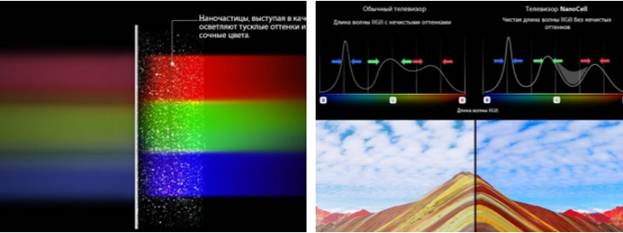 Despite the popularity of the technology, there are some minor disadvantages, for example:
Despite the popularity of the technology, there are some minor disadvantages, for example:
- Many models from competitive companies offer higher image contrast.
- The basis of NanoCell (based on liquid crystals) becomes obsolete over time.
NanoCell technology – how does it work?
So, NanoCell display, what is it, what is the principle of operation? In terms of structure, TVs with NanoCell are based on LED matrices, special dust is applied on top of the screen, with the smallest particles no more than 1 nanometer. Thanks to which it is possible to effectively filter out dull colors. This is possible by removing long RGB wavelength impurities to provide true-to-life, crisp color reproduction. NanoCell is used in digital technology by incorporating a unique light-absorbing material to block the wavelength and difference between the filters of the three primary colors. Often, at this length, the colors have 580-610 nm. As a result, in the LG nanocell TV and other analog models, a process of desaturation of green and red hues is formed, in fact, the flow of red light in green and in the reverse order occurs. NanoCell technology blocks that light to give pure red and green tints to the TV screen. It is also important that it is thanks to NanoCell technology that the viewing angle no longer matters, the image will not be distorted on the LG nanocell TV. Interestingly, LG TVs have a 4th generation intelligent processor, whose functions include eliminating noise, the need to optimize the picture and image saturation. There are many optimization options in different content viewing modes.
Interestingly, LG TVs have a 4th generation intelligent processor, whose functions include eliminating noise, the need to optimize the picture and image saturation. There are many optimization options in different content viewing modes.
Important! Those who like to test their skills in games on Smart TV should know that NanoCell technology fully meets the latest requirements of game consoles.
TOP best TVs for 2022 with NanoCell technology
Today there is a large assortment of TVs, so choosing a Smart TV with NanoCell technology, you should study all the new items and current offers. New models include the following:
- NANO82 55” 4K NanoCell;
- NANO80 50” 4K NanoCell;
- NANO75 4K NanoCell TV (43 and 65 diagonal).
Users have already expressed their admiration for the following NanoCell TVs:
- LG NANO99 86” 8K NanoCell;
- LG NANO96 75” 8K NanoCell.
There are also interesting models with a small diagonal, for example, LG nanocell 49sm8600pla or LG nanocell 49nano866na, which will please not only with functionality, but also with price.



